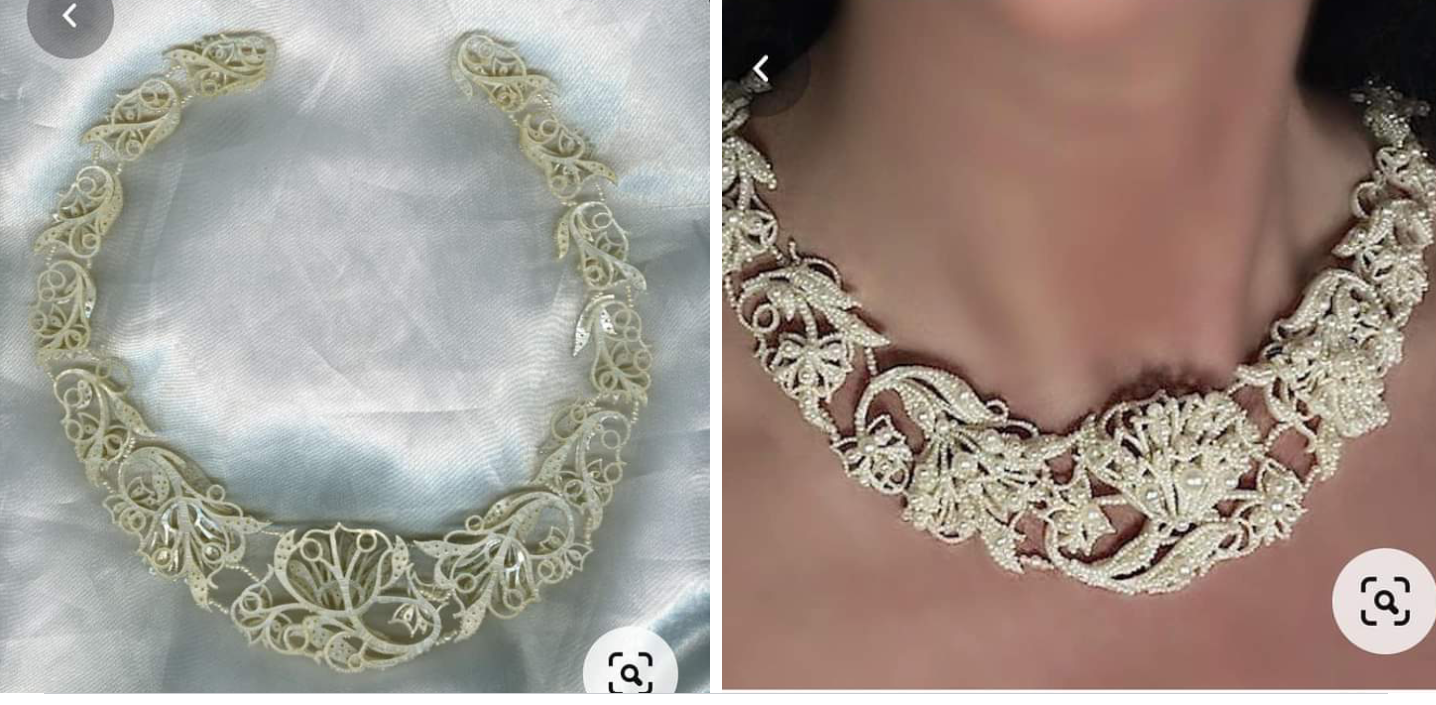Written by volunteer, Krisinda Boyce
From the last quarter of the 18th century up to the first quarter of the 19th century (Georgian Era) was a great demand for seed pearls for adornment.
Seed pearls came from China and India. They were sold in clusters on strings. Much like purchasing beads today. Seed pearls are also known as “cold water pearls,” because they are found in fresh water and salt water oysters.
Seed pearls are very tiny roughly 2mm in diameter and smaller, making them very challenging to work with. Jewelers needed great skill and patience to work with seed pearls, selecting only the pieces to work with.
The base for seed pearl jewelry used is mother of pearl shell. The designer would first create a paper or cardboard template; then a plate is cut from mother of pearl shell by hand using the template pattern. Holes would be drilled manually and very carefully into the mother of pearl base.
Depending on the size of the seed pearl hole, white silk thread would be used. The smaller the seed pearl hole a single strand of white horse hair would be used. Jewelers preferred the hair cut from a live horse for it’s strength. Horse hair was sold in 8 to 14 inch lengths in a bundle. Up to 1 ounce would be used. Not all horse hair strands were used. Dry and brittle pieces were avoided. Jewelers had very high standards to produce perfect quality pieces of jewelry.
Seed pearls were used for adornment on clothing, jewelry, books, jewelry boxes and hand beaded purses. The jewelry designers were individuals working from their homes creating and designing fabulous works of art. They were nicknamed the “cottage industry.”
So far to my knowledge there are no individually signed or stamped pieces of seed pearl jewelry. My guess is the mother of pearl shell base was too fragile. The jewelry would be sold through other companies. Tiffany’s being one company who prided themselves on top quality products. Just think how highly skilled those individual jewelers were. Making every piece by hand carefully and weaving one pearl at a time. Like us modern beaders counting one seed bead at a time.


References you can check out for more detail for pictures and videos.
Pinterest.com type in “seed pearl jewelry”
Youtube.com search for a video “seed pearl jewels for sale 19th C. You will see the amazing quality in detail and up close.
Google search type in “Baroda Pearl Carpet,” to read up on the history. It was made with 1 1/2 million seed pearls, adorned with diamonds, rubies, emeralds and sapphires. Not the kind of carpet to be walked on. It’s current home is in a Qatar museum. They purchased the Baroda carpet for 5 1/2 million dollars back in 2009. It is a stunning piece of art work. Yes the carpet was made one bead and jewel at a time.
Written by volunteer, Krisinda Boyce
